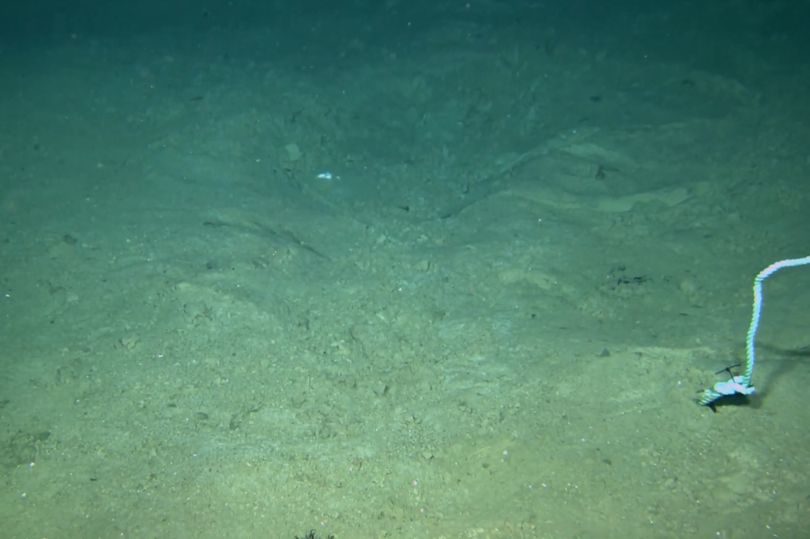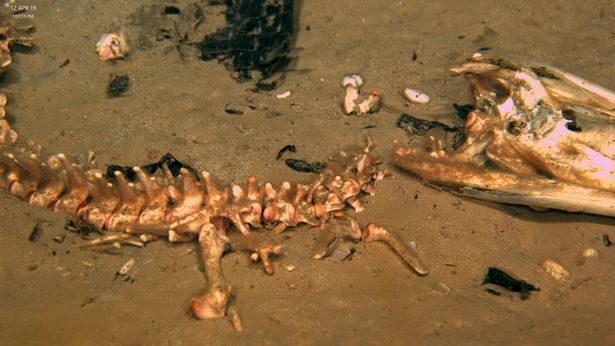
© Lumcon via Pen NewsAll that was left after one of the three alligators was snatched whole
A mystery predator devoured an alligator corpse after researchers left it underwater for an ocean study.
Scientists had lowered the three dead reptiles at a depth of one and a half miles in the Gulf of Mexico to understand how carbon-hungry creatures of the deep would react.
Despite one alligator and its harness having a combined weight of 38.9kg (85.8lbs), a mystery predator managed to pull it 30ft through the sand, drag marks suggested. The rope was bitten completely through, allowing the predator to carry away its meal.
When the scientists returned to the drop zone eight days later, they found nothing but an alligator-shaped depression in the sea bed and the weight with rope still attached.

© Lumcon via Pen NewsOne of the other alligators lowered into the sea was eaten by crustaceans
Another alligator had its bones picked clean within a few weeks and a third one was devoured by deep-sea crustaceans.
Dr Craig McClain of the Louisiana Universities Marine Consortium, which organised the drop, said there was no way to be sure of what had snatched the missing alligator.
"We have no video evidence for what removed that alligator," he said.
"Through a process of reasoning and exploring different options, we think that one of two species of shark is the most likely candidate. However, this remains a hypothesis at this time."
It is believed the predator might be a Greenland shark or a sixgill shark, who would have eaten the gator whole.
The team had hoped that the reptiles' tough hides would impede creatures of the deep from getting to the soft tissue underneath.
Less than 24 hours later, scientists found a group of giant isopods, a type of crustaceans, had already penetrated one gator's hide. When they checked up on the other alligator a month-and-a-half later, they found only skeletal remains, with no soft tissue remaining.
Scientists were studying what would happen if carbon-hungry creatures found food 1.5miles beneath the sea's surface.
The bones also revealed a type of zombie worm, or osedax, previously unknown to science. The worms colonise bones and consume the lipids within, and have never before been observed in the Gulf of Mexico.
"Our group seeks to understand how carbon is cycled through oceans as well as the connections between land and oceans in the carbon cycle," said Dr McClain.
"Given that large populations of crocodilians are often near coastal habitats, our group seeks to understand how their carcasses might serve as a carbon source in the deep oceans.
"How quickly can deep-sea organisms, and through what part of the food web, access this carbon?"
The answer, it turns out, is very quickly.
[Link]